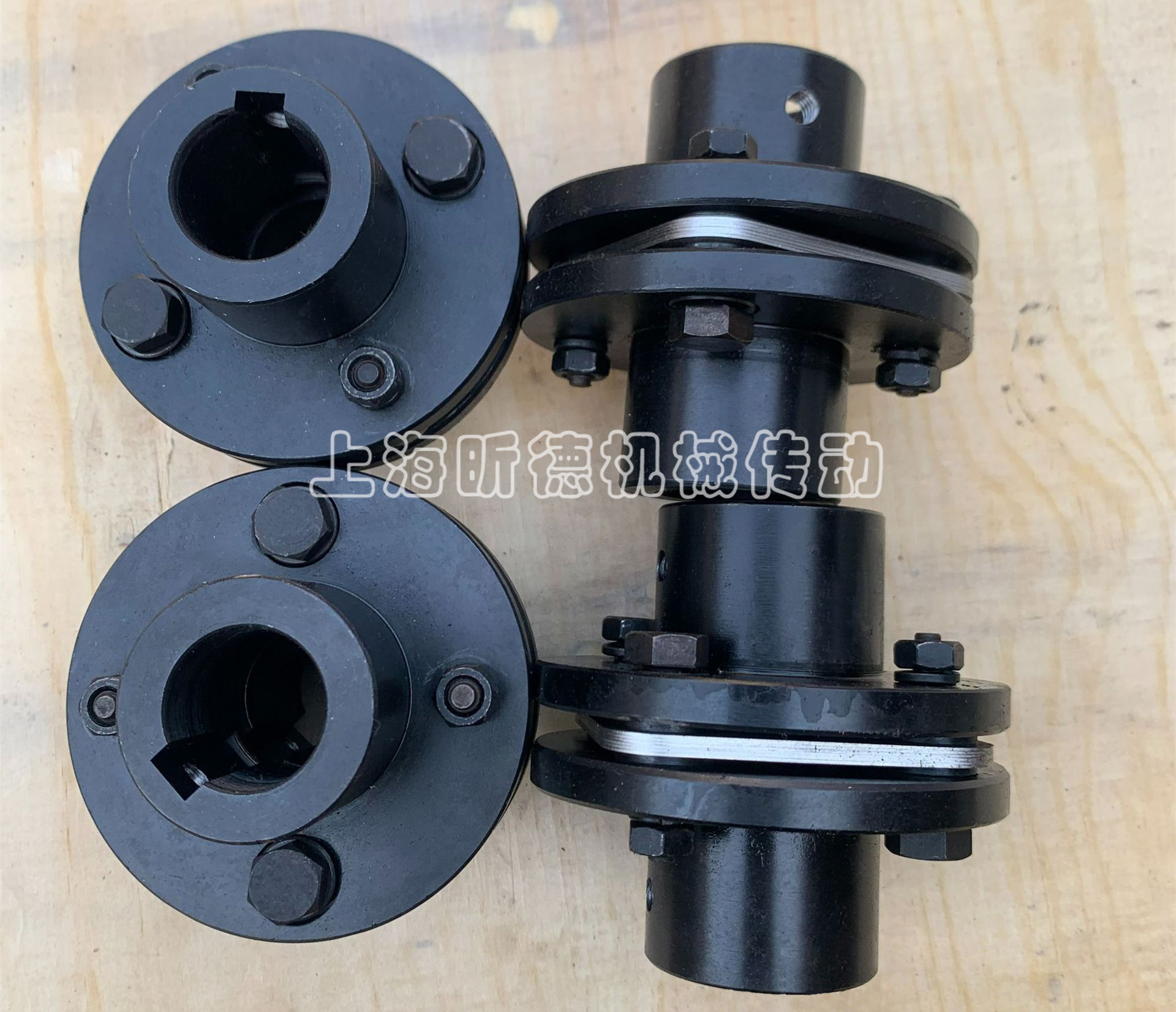Understanding what a diaphragm coupling is can be accomplished through just one article. As a high-performance flexible coupling with metallic elastic elements, diaphragm couplings play a crucial role in modern mechanical transmission systems. However, there may still be many newcomers who are not very familiar with it. As a professional manufacturer of diaphragm couplings, Shanghai Xinde is here to elaborate on what diaphragm couplings are and what functions they serve.

What is a Diaphragm Coupling?
A diaphragm coupling is a device that compensates for relative displacement between two connected shafts through the elastic deformation of diaphragms. It typically consists of several sets of diaphragms made of stainless steel thin plates, alternately connected to two half-couplings. Each set of diaphragms is stacked from several pieces. This design endows diaphragm couplings with the characteristics of high-performance metallic elastic elements, enabling their use in high-temperature, high-speed, and corrosive environments.
A diaphragm coupling consists of at least one diaphragm and two hubs. The diaphragms are fastened to the hubs with pins and generally will not loosen or cause recoil between the diaphragms and hubs. Some manufacturers offer two diaphragms, while others provide three, with one or two rigid elements in between, connected to the hubs on both sides. The diaphragms themselves are very thin and can easily bend when relative displacement loads occur, thus capable of withstanding deviations of up to 1.5 degrees while generating low bearing loads in servo systems.
Main Functions of Diaphragm Couplings
Strong Compensation Capability:
Diaphragm couplings can compensate for axial, radial, and angular offsets caused by manufacturing errors, installation errors, bearing deformations, and temperature changes between the driving and driven machines. Compared to gear couplings, diaphragm couplings have double the angular displacement, small reaction force during radial displacement, high flexibility, and allow certain axial, radial, and angular displacements.
Shock Absorption and Noise Reduction:
Diaphragm couplings have significant shock absorption properties, are noiseless, and wear-free. These characteristics make them particularly popular in transmission systems requiring high reliability and low noise.
Adaptation to Harsh Environments:
Diaphragm couplings are suitable for operation in high temperatures (-80°C to +300°C) and harsh environments, and can safely operate under impact and vibration conditions. They are unaffected by temperature and oil contamination, have acid and alkali resistance, and corrosion resistance, making them suitable for shaft transmission in high-temperature, high-speed, and corrosive environments.
High Transmission Efficiency:
The transmission efficiency of diaphragm couplings can reach 99.86%, making them especially suitable for medium and high-speed high-power transmissions. They feature a simple structure, light weight, small volume, and easy installation and removal without moving the machine (referring to the type with an intermediate shaft). They require no lubrication.
Accurate Speed Transmission:
Diaphragm couplings can accurately transmit speed without slippage and can be used in the transmission structure of precision machinery. They are commonly used in servo systems, where diaphragms exhibit good torque rigidity, albeit slightly inferior to bellows couplings.
Application Scope
Due to their significant characteristics such as high mechanical load capacity, lightweight, compact structure, high and stable transmission efficiency, easy installation and removal, no lubrication required, long service life, noiselessness, and corrosion resistance, diaphragm couplings are widely used in various industries and mechanical devices. They are particularly suitable for high-speed, high-torque shaft transmissions and mechanical systems with small load variations. Specifically, diaphragm couplings are widely used in water pumps (especially high-power chemical pumps), fans, compressors, hydraulic and petroleum machinery, printing and textile machinery, chemical and mining machinery, metallurgical equipment, high-speed power transmission systems for aircraft (such as helicopters) and ships, steam turbines, piston power machinery transmission systems, as well as high-speed, high-power transmission systems for tracked vehicles and generator sets.

Alright, after so much information, I believe you have a general understanding of diaphragm couplings. Don't fail to recognize them next time you see them! As a professional diaphragm coupling manufacturer, Shanghai Xinde hopes to provide you with more high-quality and practical products to make your machinery run better! If you have any questions about diaphragm couplings or need to purchase them, please remember to contact us!
Contact: Tina Lau
Phone: 13371933299
Tel: 021-34150570
Email: 13371933299@126.com
Add: No.388,Doushi road,Zhuanqiao town,Minhang district, Shanghai

